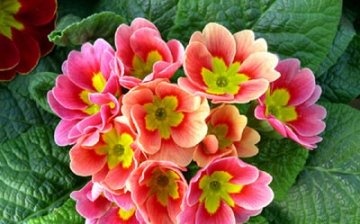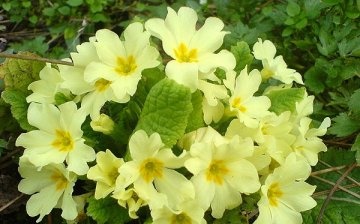Primrose, or primrose, will not let you miss the spring!
In Latin, the word primus means "first." This explains the fact that the flower has two names: the first is generally accepted, the second is popular. It really blooms very early, does not even wait for the snow to melt completely.
Decorating your garden with these spring messengers is easy. They will cheer you up after winter. And do not be surprised if bees come to you often: some species of primrose attract them with their nectar.
Primrose, or primrose, grows well both on the street and on the windowsill. The only difference is that at home it can bloom all winter. However, a number of conditions necessary for flowering will still have to be met.
- In the bright sun, the primrose leaves wither, the flowers fade and fade faster. Therefore, choose a place for her where a protective shadow forms at noon.
- On too damp soils, the plant may suffer from gray rot. So the soil should not be overly wet.
- From an excess of peat and fertilization in the heat, the primrose loses a lot of moisture. The ideal option is cultivated loams.
- If you plant a primrose in late autumn, it may not take root, and simply die in winter. Therefore, the best time is early spring or early autumn.
- The primrose grows quite well. But too often there is no need to transplant and separate the bushes, once every three years is enough.
- With a long storage of seeds, their germination decreases. Therefore, it is better to sow them immediately, in the year of harvest.
By the way, primrose, or primrose, is quite an edible plant.
- Fresh leaves are used in spring salads and soups.
- Vitamin tea is brewed from flowers.
- The root is used as a spicy condiment.
All parts of this plant are loaded with vitamins and essential oils that are beneficial to health. However, in some people, primrose can cause allergies even by touching its fluffy leaves. If you encounter it for the first time, pay attention to this.








